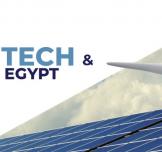Gartner Emerging Technologies and Trends Impact Radar for 2022

Smart spaces, homomorphic encryption, generative AI, graph technologies and the metaverse will disrupt and transform entire markets.
Wouldn’t it be helpful if a building could tell you when a filter in the HVAC system was causing the system to function inefficiently and needed changing? What if it adjusted the heat or air based on usage? Does your current system actively track the air quality within the building or ensure that there aren’t too many people to comply with COVID-19 recommendations?
Smart spaces are capable of all these tasks, and product leaders should consider how they’ll factor into future business opportunities alongside potential investments.
Included in this year’s Emerging Technologies and Trends Impact Radar are 23 emerging trends and technologies with the most potential to disrupt and transform markets.
These trends center around four key themes:
- The smart world: Change how people interact with the world around them.
- Productivity revolution: Build on core AI technologies and extend computing ability.
- Ubiquitous and transparent security: Underscore the importance of protecting an increasingly digital world.
- Critical enablers: Act as an additive force to bring the emerging technologies and trends together, and heighten the benefits by reshaping business practices, processes, methods, models and/or functions in markets where they are applied.
A quick reminder on how to look at the radar: The rings represent the range, which estimates the number of years it will take until the technology or trend crosses from early adopter to early majority adopter. The size and color of the emerging technology — or trend radar blip — represent the technology’s mass; in other words, how substantial the impact of the technology or trend will be on existing products and markets.
Most of this year's emerging technologies and trends are three to eight years out from reaching early majority. This signals that significant innovation will happen in the years ahead. Let’s look at the five we think will prove most interesting.
Smart Spaces
Time to market: 3-6 years
Mass: High
Theme: The Smart World
A smart space is a physical or digital environment in which humans and technology-enabled systems interact in increasingly open, connected, coordinated and intelligent ecosystems. COVID-19 accelerated market adoption of smart spaces, as worker safety and social distancing capabilities became de facto standards. As organizations embrace the ability of smart spaces to incorporate legacy systems alongside new technologies like IoT, we’ll see increasing opportunities to drive more connected, coordinated and intelligent solutions across target environments.
Generative AI
Time to market: 6-8 years
Mass: High
Theme: Productivity Revolution
Generative AI refers to AI techniques that learn a representation of artifacts from the data and use it to generate brand-new, completely original artifacts that preserve a likeness to original data. we already see successes in a wide range of applications, from creating new materials to preserving data privacy. However, safety concerns and negative use of generative AI, such as deepfakes, might slow adoption in some industries.
Homomorphic Encryption
Time to Market: 3-6 years
Mass: High
Theme: Ubiquitous and Transparent Security
Homomorphic encryption is a cryptographic method that returns an encrypted result to the data owner. Essentially, this enables third parties to process encrypted data while having no knowledge about the data or the results. Several factors prevent near-term adoption of the technology, including performance issues, lack of standardization and complexity.
Graph Technologies
Time to market: 3-6 years
Mass: High
Theme: Critical Enablers
Graph technologies refer to graph data management and analytics techniques. This group of technologies enables the exploration of relationships between entities like organizations, people or transactions. The wide range of potential applications for graph technologies means it will take three to six years to reach early majority adoption.
The Metaverse: Outside Eight Years but Meriting Awareness
One other noteworthy trend is the metaverse. It is a persistent and immersive digital environment of independent, yet interconnected networks that will use yet-to-be-determined protocols for communications. It enables persistent, decentralized, collaborative, interoperable digital content that intersects with the physical world’s real-time, spatially oriented and indexed content.
The metaverse is the next evolutionary stage of the internet, but it is still in the early stage of its development. We expect the transition toward the metaverse to be as significant as the one from analog to digital.
Article Source: Here.





































































EgyptInnovate site is not responsible for the content of the comments